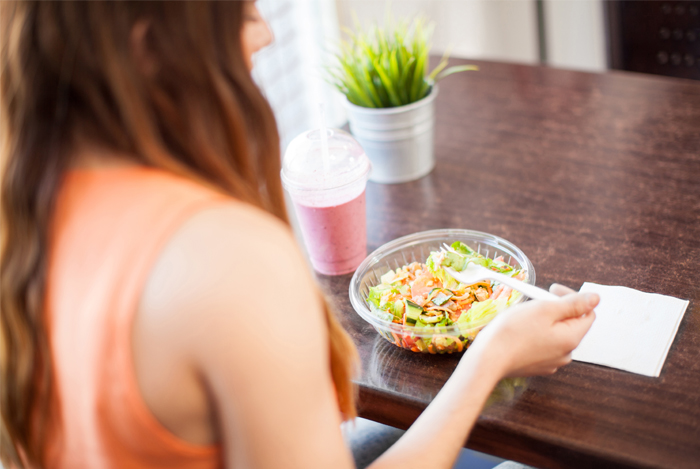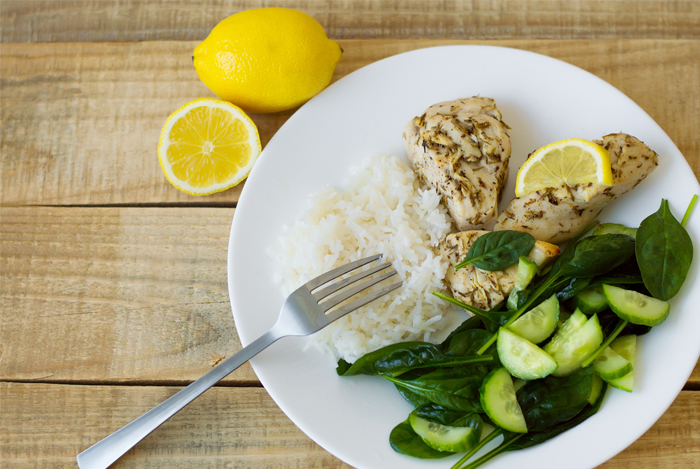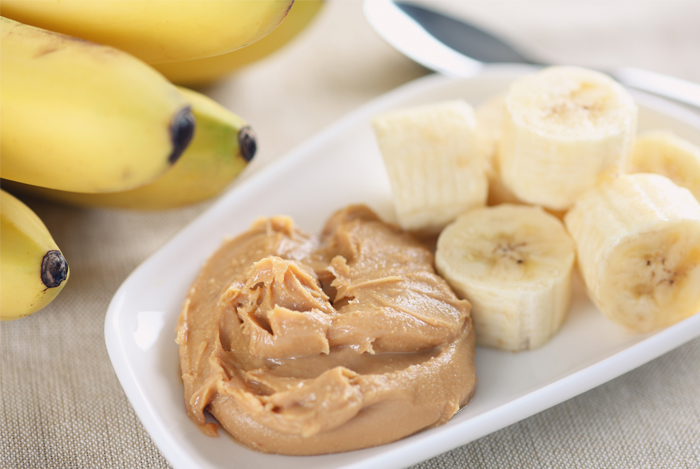One of the most important things you can do to improve your health is to learn how to balance your blood sugar levels better each day.
Heart disease is the number one cause of death in the United States, with many of those deaths being related to diabetes.
The most common form of diabetes that is most prevalent today in the United States is Type 2 diabetes.
Luckily, Type 2 diabetes and heart disease are two types of diseases that you can most easily prevent and reverse directly through your diet.
How Your Blood Sugar Levels Affect Your Health:

Both non-diabetics and diabetics should all pay attention to their blood sugar levels since your blood sugar can directly affect your risk of the disease if you don’t have it or worsen its symptoms if you already have it.
Diabetes can directly affect the heart, so it’s imperative that you can consider eating for your heart when you also aim to eat a diet that can reduce the rates or reverse Type 2 diabetes or general blood sugar problems.
Why?
Because chronic poor blood sugar levels can lead to Type 2 diabetes later on. That means, while the fast food, sugary snacks, fatty foods, and fun weekends out drinking may not affect you right now, they can end up causing major health problems over time because of the way they all affect your insulin levels and your heart.
What about individuals who have Type 1 diabetes?
Type 1 diabetics can not change the fact that they have the disease since it is normally caused by a genetic disposition and occurs very early on in life unlike Type 2 diabetes which is caused and reversed by lifestyle and diet.
However, individuals with Type 1 diabetes can use certain forms of lifestyle factors to control their symptoms and support the way the insulin that they take functions in their bodies. This can reduce the danger they face with their disease and the stress that they put on their heart. It can also help them manage their weight and other hormones more easily.
How to Balance Your Blood Sugar Levels Better Each Day:
All that being said, here are 10 easy ways to balance your blood sugar levels better each day. These 10 steps can also improve your mood, weight, and even your food cravings since blood sugar levels affect all of these issues.
1. Eat Whole Foods

First and foremost, the foods you eat each day should be whole foods, not processed foods or foods high in oil, sugar, salt, and grease. Think fruits, vegetables, high-fiber whole grains, small amounts of nuts and seeds, and limited animal products since they contribute to problems with insulin levels.
Skip high-fat foods like pork, bacon, ham, cheese, butter, products with oils in them, and red meat and go for proteins much better for your heart such as beans, lentils, peas, quinoa, and if you eat animal products, choose egg whites or lean cuts of fish.
Whole foods contribute greater levels of vitamins, minerals, and antioxidants than animal products or processed foods do. They also support insulin function in the body much better.
2. Walk Every Single Day

You don’t have to love to exercise, but you should incorporate some walking each day, and not just up and down the street to work or around your house. Walk at least 30 minutes a day at a brisk pace either in your home on a treadmill, at the gym, or outside around your neighborhood.
Getting out and walking at a brisk pace (versus a casual stroll) will encourage healthy insulin function in the body, lower blood sugar levels, and it will improve your overall weight over time. It’s also a great way to manage stress, another important factor of your health that affects how insulin works in the body.
Other forms of exercise are also great if you enjoy them; walking is just a great option for your heart, blood sugar levels, and it’s one of the easiest for most people to do anywhere.
3. Don’t Skip Meals

You should always listen to your hunger levels throughout the day and stop eating when you are full, but if you are hungry when it comes time for lunch and are busy, skip the urge to just forgo your mid-day meal.
Skipping meals when you are hungry worsens low insulin levels and can cause a greater spike in insulin later on when you do eat. It also puts stress on your pancreas, heart, and changes the way your other hormones function when you chronically skip meals and ignore hunger.
One way to combat this issue is to always have a healthy snack or mini meal with you in case you don’t think you’ll be able to eat. A green apple and a handful of raw almonds is a great option, or you can carry individual packets of plain and unsalted natural almond or peanut butter with you to eat since they contain some protein, healthy fats, and a little fiber.
Always remember that a healthy snack will tide you over until you can sit down to eat a healthy meal and won’t leave your insulin levels low leading them to spike later on. Preparing healthy meals for yourself ahead of time is another great way to stay on top of your hunger while at home and on-the-go.
4. Say No to Added Sugars

All added sugars negatively affect your insulin levels.
But what exactly are added sugars?
In short, any sugars not found in whole foods (fruits, vegetables, etc.). This means all refined sugar, all natural sugars (like coconut sugar or maple syrup and honey) and anything else that is a refined form of a food that contains sugar. While some of these options may contain nutrients, they do not support insulin levels or help your heart in the long-run.
Fresh fruit is fine for most diabetics and those with insulin problems to eat when it’s eaten in single serving portions and spaced out throughout the day.
Avoid dried fruit which is higher in sugar per serving and more concentrated which means it will spike your blood sugar levels more easily than fresh fruit will.
Natural, no-calorie and non-glycemic sweeteners such as stevia and monk fruit extract are also 100 percent fine to use since they are made from a plant and contribute no calories, sugar, or changes in insulin levels. These can also be useful for helping you transition away from refined sugar in your morning coffee, in tea, or in other recipes you would use white sugar.
5. Cook More At Home

Cooking at home puts you in better control of what goes in your meal which is imperative when you are looking to avoid sugar, oil, and high-fat ingredients.
Most all restaurants and fast food chains include sugar, oil, or other high-fat ingredients in sauces, syrups, glazes, and dressings that you may overlook when you order off the menu.
Preparing a healthy meal at home to balance your blood sugar levels better is as easy as steaming up a bunch of vegetables to enjoy with some lean protein, chopping up some fruit over a bowl of oatmeal and topping it with some raw almonds, slicing up some fresh vegetables and fruit to make a fresh salad and serving it with a bowl of lentil soup, or slow-cooking your favorite whole grain with vegetables, some beans or peas, and making a hot and cozy soup.
You can also use low-sodium and natural seasonings made without sugar such as Mrs. Dash, which has no sugar, or you can use other comparable organic options on the market.
Fresh herbs can also change the way a meal tastes and are even easy to grow right in your own home.
6. Eat a Balanced Diet

No matter what kind of diet you identify with, your diet should be balanced in order to support blood sugar levels the best. This means not relying too heavily on protein, fat, or carbs throughout the day and eating the right balance of each of these foods at each of your meals.
For an example, do your best to ensure that vegetables or greens are the center of each meal since they support insulin levels better than any of other food due to the fiber and other nutrients that they contain.
From there, fill out the rest of your plate with equal amounts of whole grains or a starchy vegetable and a source of lean protein. Then choose a piece of fruit and 1 ounce serving of fat per meal (such as almonds, flax, or some olives) as the rest of your meal.
7. Start Your Day on the Right Foot

We’ve covered how to cook at home and the importance of eating a balanced diet, but what about breakfast? It’s the easiest meal to make blood sugar-friendly, yet it’s also one of the meals that people eat the worst at.
Sugary cereal, refined bagels or toast, bacon, and eggs are not healthy foods for breakfast. Instead, you’re going to need to choose something higher in fiber and lower in fat and sugar.
Here are two great options that work very well:
1. A green smoothie made with unsweetened almond milk, 2 cups of spinach, 2 tablespoons of ground flax, 1 cup frozen berries, and ½ cup of oats. Sweeten with some stevia or ½ a chopped green apple. This option is full of fiber, protein and healthy fats that will keep you full and won’t cause a swing in blood sugar levels like high-sugar cereals or too much fruit at one time will. Pears and other apples are also good choices if you’d like to include those instead of a green apple.
2. ¼ cup steel cut oatmeal or ½ cup rolled oats prepared with non-dairy milk, frozen berries, cinnamon, and 2 tablespoons of nuts or seeds is also a great option. Oats are wonderful for improving insulin levels (and cholesterol levels) when they are eaten in steel-cut or rolled form, but they should be prepared correctly without sugar or processed ingredients. Overnight oats can also be enjoyed by soaking ½ cup of oats with some unsweetened non-dairy milk, frozen or fresh berries, chia seeds or ground flax seeds, and cinnamon. In the morning you can enjoy as is, or slice up a little extra fruit to go on top if you prefer.
8. Snack Smart

Snacks are an issue many people struggle with when it comes to balancing blood sugar levels better each day. Reaching for unhealthy snacks normally occurs because once you finally realize that you’re hungry in-between meals and need a snack, your insulin levels are usually already low which leaves you reaching for anything like chips, cookies, milk chocolate, donuts, ice cream, or high-sugar snack bars and granola bars.
The way to overcome this common problem is to keep healthy snacks with you all the time, even if you don’t think you’ll need them.
Healthy options that are portable and can easily be taken anywhere include:
- individual packs of raw or dry-roasted almonds (not those salted or coated in oil),
- an apple with some almonds,
- a small banana with 1 packet of natural peanut or almond butter
- pumpkin seeds and an orange
Choosing something with fiber is important no matter what option you choose. Just be sure that your snack choice is as close to a whole food as possible and balanced in carbs, fat, and protein to ensure it’s a healthy option.
9. Get Enough Sleep

This tip might surprise you, but it’s especially important when it comes to balancing your blood sugar levels better each day. Sleep directly affects your hormones, specifically those that influence insulin levels and blood sugar levels.
Not getting enough sleep can cause your body to produce less leptin which is a hormone that tells you you are full and to stop eating.
Insufficient sleep also causes your body to produce more ghrelin which is your hunger hormone that tells you to eat, eat, eat everything in sight. This scenario is why after a night without sufficient sleep you feel starving no matter how much you eat or how often you eat.
You’ve been there before, right?
Not getting enough sleep also negatively affects glucose metabolism and tolerance in the body which means that not only does too little sleep not allow your body to use glucose like it is supposed to take care of your blood sugar levels, but it also reduces how well your body tolerates glucose, even from whole foods.
Here’s how to fix the issue: do your absolute best to get at least 8 hours of sleep per day by turning in an earlier, getting up later, or doing whatever else you need to do in order to correct the issue . This one change can be one of the best things you do for your overall health along with eating a healthy diet.
10. Ditch the Nasty Habits

Aside from sugar and fast food, smoking and alcohol consumption are two of the worst things that affect your overall health, especially your heart.
Chronic stress is another extremely poor habit that affects all your hormones, including those that influence your blood sugar levels, heart health, and your weight.
Everyone has habits they can ditch or improve upon when it comes to improving their health, so if you’re looking at this list and feeling discouraged, don’t fret. Take everything one day at a time and focus on staying present in the moment and making the best choice you can instead of focusing on everything at once.
Want more tips? These healthy sources of protein can also balance your blood sugar levels throughout the day!
The post 10 Easy Ways to Balance Your Blood Sugar Levels Better Each Day appeared first on Nutrition Secrets.
http://www.nutritionsecrets.com/10-easy-ways-to-balance-your-blood-sugar-levels-better-each-day/
No comments:
Post a Comment